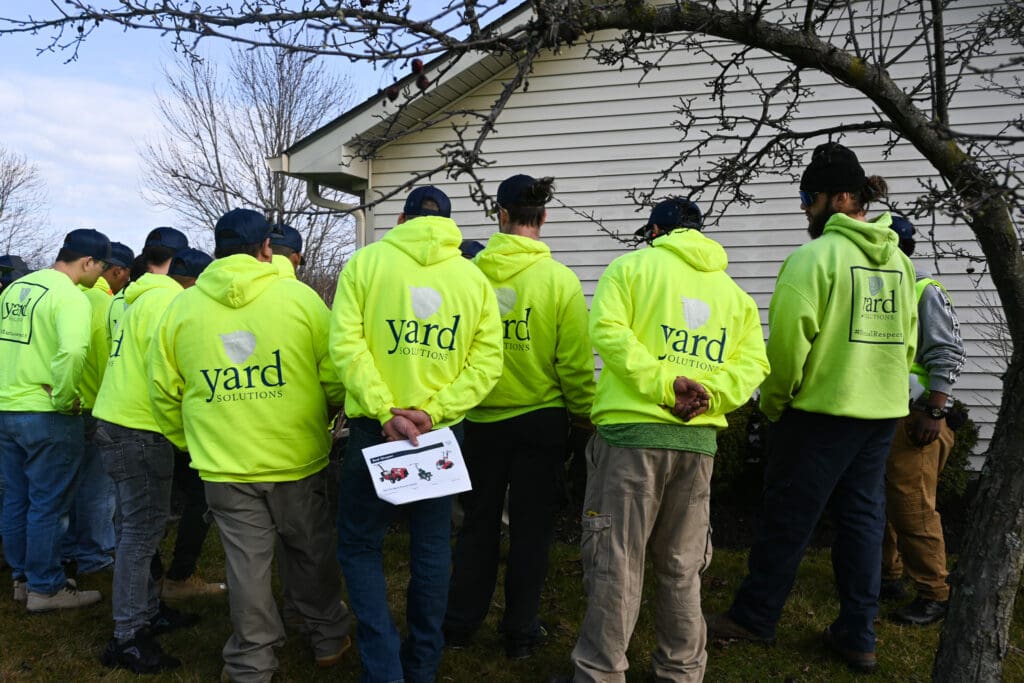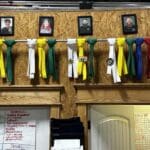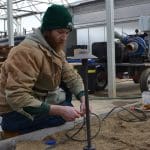
Training is critical to your landscape company’s overall success, but it is often a task that falls by the wayside during the busy season. Thankfully, there’s no one right way to train your team. What works for your operations may not be a good fit for another landscape business, but you can always gain inspiration from each other.
Check out how three different landscape companies approach training within their companies.
EarthWorks, Inc.
Chris Lee, president of EarthWorks, Inc. based in Lillian, Texas, says they struggled with training for a long time. Then two and half years ago, out of frustration, they finally sat back and developed their current system.
“Employees didn’t feel super comfortable if we didn’t do a good job with training them what they were being asked to do and how to do it, but it also put them in a situation where they weren’t up to able to perform maybe up to the expectations of the foreman or the crew,” Lee says.

He says the crew often didn’t want these new hires on their crews because they weren’t properly trained.
Finally, Lee says they decided that for training to come first, they needed to take production out of the picture entirely. They thought through what was the ideal way to onboard their team members. They decided to have a dedicated person at each branch who would handle onboarding and training and each employee would spend a week covering everything from equipment safety to their different work processes.
“There’s no pressure; there’s no ‘We got to get to the next job site.’” Lee says. “None of that. It’s all gone. All they have to worry about is learning. When we first looked at that, we’re like, ‘Well, that’s an expense because then we’re going to have all these new guys and they’re not going to be productive for their first week.’ But then again, you look at the flip side there’s a downside of not doing it right. It’s a little bit fuzzier math. There is a true higher cost in the turnover and re-onboarding people over and over.”
He says their trainers can pass a new hire in a day or decide after five days if an employee needs more time and is worth the investment or not a good fit. No matter how much experience an individual has, each hire has to spend at least one full day with the trainer to certify they understand everything.
Lee says this model prevents bad fits from ever joining their production crews, which has made a huge difference in the field.
When the trainer doesn’t have any new hires to train, the branch manager can give them one or two crews that may be struggling with quality control or attention to detail to spend a half day with them.
Aiello Landscape
Tommy Aiello, founder of Aiello Landscape, based in Vero Beach, Florida, says their training system started back when he had 10 to 12 employees and they were receiving yearly raises without demonstrating any increased knowledge.

“I was getting frustrated,” Aiello says. “Every year I’m giving these guys $1, but they’re not showing me that they know any more.”
Now, after 90 days with the company, Aiello employees must be able to identify 25 plants and 50 tools in English, answer 10 safety questions, and answer some general horticulture questions. The company has an ID garden with 75 different species of plants but also laminated cards in the trucks so crews can look at the names of plant material as they’re traveling from jobsite to jobsite.
“Before we hire someone, we hand them a 90-day packet and that packet is ‘Hey, these are the things we expect you to know in your first 90 days’ because we want them to get up to speed as quickly as possible,” says Dan Crisafulli, vice president of Aiello. “It’s basically setting the expectation level and an awareness level about the training program.”
The company has other learning checkpoints employees have to reach as their tenure increases.
Aiello says there’s a chart with every employee’s name on it in the timecard room with the different stations, and when they pass those stations, they get it checked off. He says there’s some peer pressure amongst them to get started and earn a certificate.
Crisafulli says they have tailored their training program so if they hire someone who’s specifically going to work in gardening, they’ll focus their modules on those specific topics.
Pete Benedict, president of Aiello, says they expect crew leaders to show new employees proper landscape techniques. In Aiello’s partial retirement, they provide him a list of their rising stars and he will go out in the field and work with those individuals.
“I mean how cool is it that our company’s founder is doing the majority of our training with our new employees,” Crisafulli says.
Yard Solutions
At Yard Solutions, based in Groveport, Ohio, they have designated people on staff who are trainers and also teach their crew leaders the art of PESOS (Prepare, Explain, Show, Observe, Supervise). The company follows the basic principle of setting the task, explaining what tools are needed for the task and setting a measurable goal for the trainee.

Joe Lewis, COO of Yard Solutions, says they train to instill habits and they offer relevant feedback to reinforce those habits. Their success in safety, productivity, quality, morale and retention, validates the habits.
They also have Yard School, which outlines for their employees their area of focus and what certifications they need to progress. The company doesn’t stop at field-level employees. They also have specific training outlined for every level within the company. Lewis advises not trying to cram everything an employee needs to know into one day.
“If we want to teach somebody nothing, then show them everything,” Lewis says.
This is why Yard Solutions has built out an annual training calendar so they can cover specific topics leading up to seasonal tasks.
“As a leader you’re required to be a strategist, a visionary and a problem solver,” Lewis says. “If you’re a visionary, problem solver, strategist, training is no different. The worst thing to do is to have something go wrong, whether it be you miss a deadline, you’re not profitable or somebody gets hurt, you lose clients, and then you go back to the root cause and it’s because you fail to prepare your people.”




